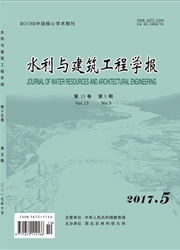

 中文摘要:
中文摘要:
我国北方水资源供需矛盾突出,洪水资源利用成为缓解水资源短缺的有效途径。为了减少洪水资源利用风险,提高洪水资源利用效益,以洮儿河下游区域为研究对象,分别利用回归分析、Spearman秩次相关检验法、Kendall秩次相关检验法、M-K法、滑动t检验法、小波分析对区域的干支流年径流的趋势、突变和多时间尺度特征进行了对比分析和干支年径流变化规律研究。结果表明,区域支流年径流系列下降趋势较干流明显;干支流的突变时间存在不一致性,支流的突变点为1972年、1984年、1999年,干流的突变点为1964年、1983年、1999年;干支流的主周期存在差异性,分别为22 a、11 a、7 a、4 a与14 a、20 a、9 a、7 a。通过对洮儿河下游区域干支流年径流演变规律进行研究,为未来径流趋势合理预测提供了技术支持,并对区域洪水资源利用具有一定的指导意义。
 英文摘要:
英文摘要:
The contradiction between supply and demand of water resources is serious in north China and floodwater uti- lization has become an effective way to alleviate water shortages. To reduce the risk of floodwater utilization and improve its efficiency, the downstream region of Taoerhe river basin was taken as an example. The methods of regression analysis, Spearman rank correlation test, Kendall rank correlation test, Man- Kendall trend test, moving t test and wavelet analy- sis were used respectively to study the annual runoff of the main stream and the tributary. Its trend, mutations, multiple time scales and variation law were analyzed and compared. The results showed that the runoff of the tributary showed more significant downward trend than that of the main stream. The main stream abruptly changed in 1964, 1983 and 1999, while the tributary abruptly changed in 1972, 1984 and 1999. The main periods of the trunk were 22 a, 11 a, 7 a, 4 a which were different from that of the tributary of 14 a, 20 a, 9 a, 7 a. The law study of the annual runoff can offer some technical support for the future annual nmoff prediction and some guidance for the use of flood water resources.
 同期刊论文项目
同期刊论文项目
 同项目期刊论文
同项目期刊论文
 期刊信息
期刊信息
